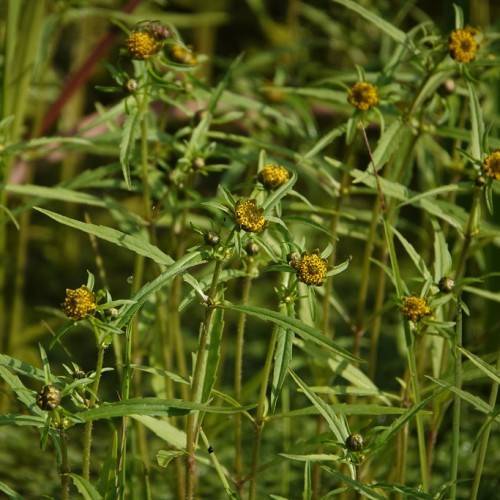
Nodding Beggartick
Bidens cernua
Also Known As - Nodding Bur Marigold,SticktightWatering:
Frequent
Hardiness Zone:
Flowers:
Flowers
Sun:
full sun,part shade
Fruits:
Fruits Ready In Fall
Leaf:
Yes
Growth Rate:
Low
Drought Tolerant:
Yes
Salt Tolerant:
Yes
Invasive:
Yes
Care Level:
Medium
watering
Water Beggarticks (Bidens beckii) should be watered thoroughly once a week during their growing season. Make sure to keep the soil consistently moist, but avoid overwatering. Take care not to let the soil dry out between watering and avoid letting the plant sit in water for too long. Beggarticks also benefit from misting from time to time. During the winter months, watering should be reduced to 1 thorough watering every 2 weeks.
sunlight
Water Beggarticks (Bidens beckii) prefer full sun, but they are also able to tolerate some light shade. During the spring and summer, they should get at least 4 to 6 hours of direct sunlight each day. During the winter, up to 8 hours of sunlight is beneficial. The amount of sunlight a Water Beggarticks plant needs depends on the local climate and how fast it is growing.
pruning
Water Beggarticks should be pruned lightly and consistently. Pruning should take place in late winter or early spring before new growth appears. When pruning, remove any dead or diseased stems and any stems that have become spindly or too tall for the desired shape of the plant. Trim the stems to a length of 2 or 3 inches above the soil level. Pruning should be done on a regular basis to maintain the desired shape and size of the plant.
